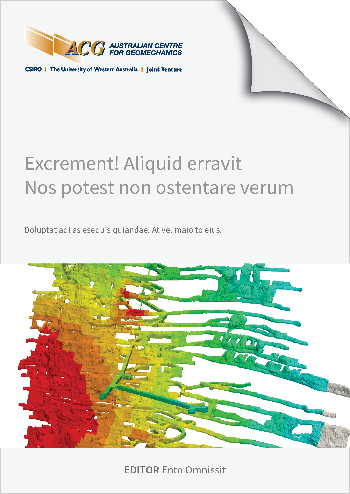Multi level modelling in block panel caving mining

|
Authors: Celhay, F; Bustmante, D; Castro, R; Arancibia, L; Latorre, A; Hidalgo, F |
DOI https://doi.org/10.36487/ACG_repo/2435_D-18
Cite As:
Celhay, F, Bustmante, D, Castro, R, Arancibia, L, Latorre, A & Hidalgo, F 2024, 'Multi level modelling in block panel caving mining', in Daniel Johansson & Håkan Schunnesson (eds), MassMin 2024: Proceedings of the International Conference & Exhibition on Mass Mining, Luleå University of Technology, Luleå, pp. 670-679, https://doi.org/10.36487/ACG_repo/2435_D-18
Abstract:
In mines using Block/Panel Caving, more than one extraction level is mined, often by design, with new levels of extraction below previously extracted ones. In those areas interacting with the extraction of a lower level, the characterization of the remaining mineral or broken ore becomes crucial because it should influence both ore extraction in the lower sectors and its recoverable grades. One mine that has faced this issue is El Teniente Division (DET) of Codelco. This mine, located in the high Andes of Chile, has been in operation for over 100 years, and with more than 8 extraction levels, a significant amount of remaining/broken ore has resulted over the years. To characterize the broken ore’s remaining grades, a methodology was developed using caving/flow modelling, conciliation with extracted grades at drawpoints, a drilling campaign, and topography measurements. DET used the gravitational flow software FlowSim BC v6.3, which yielded errors of less than 5% when modeling was compared with actual conditions. These findings underscore the efficacy of this modeling approach in providing greater certainty for long-term mining planning in operations utilizing multi-level caving.
References:
BCTEC, (2022). Operational philosophy: Wet muck extraction & Gravitational flow analysis Division El Teniente. Report 5: Estimation of resources in broken mineral, block model 2021 (in Spanish). Internal report.
Brown, E. T. (2007). Block caving geomechanics. Second edi. Julius Kruttschnitt Mineral Research Centre.
Castro, R. (2006). Study of the Mechanisms of Gravity Flow for Block Caving. PhD thesis, The University of Queensland, Brisbane.
Castro, R., Arancibia, L., Guzman, D. & Henriquez, J. P. (2018). Experiments and simulation of gravity flow in block caving through FlowSim. In Caving 2018: Proceedings of the Fourth International Symposium on Block and Sublevel Caving, pp. 312-322.
Castro, R., Gomez, R., Pierce, M. & Canales, J. (2020). Experimental quantification of vertical stresses during gravity flow in block caving. International Journal of Rock Mechanics and Mining Sciences, 127, 104237.
Castro, R., Gomez, R. & Arancibia, L. (2021). Fine material migration modelled by cellular automata. Granular matter, 24(1), 14.
Castro, R., Gomez, R., Castillo, J. & Jerez, O. (2024). Fragmentation model integrated in a gravity flows simulator for block caving planning. Granular Matter 26, 22 (2024).
Codelco, (2023). PND 2023. Internal report.
Gomez, R. & Castro, R. (2022). Experimental quantification of granular material fragmentation due to travel distance. Mining Metallurgy & Exploration, 39 (2), pp. 615-623.
Laubscher, D. H. (1994). Cave mining-the state of the art. Journal of The Southern African Institute of Mining and Metallurgy, 94(10), 279-293.
Laubscher, D. H. (2000). Block cave manual. Julius Kruttschnitt Mineral Research Centre, Brisbane.
Le-Feaux, R., Castro, R., Cortez, D., Gomez, R. & Silva, D. (2022). A hybrid extraction level layout design for block caving. Mining Technology, 131 (1), pp. 51-65.
San Martin, J. F., Castro, R., Arancibia, L., Endara, D. & Vasquez, P. (2022). Back-analysis of gravitational flows MB N01-S01 at Chuquicamata Underground Mine. In Caving 2022: Proceedings of the Fifth International Symposium on Block and Sublevel Caving. Pp. 1061-1070.
© Copyright 2025, Australian Centre for Geomechanics (ACG), The University of Western Australia. All rights reserved.
View copyright/legal information
Please direct any queries or error reports to repository-acg@uwa.edu.au
View copyright/legal information
Please direct any queries or error reports to repository-acg@uwa.edu.au